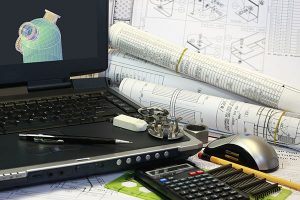Importance of Mechanical Design When Designing A Product
Mechanical design is generally a complex process that requires a wide range of skills; this complexity normally requires a set sequence in which a number of ideas are introduced, reviewed and iterated. The design process is an innovative process where decisions are made; based on available information or made tentatively with adjustments allowed as more things become clear during the mechanical design of the product.
It usually involves the use of engineering tools such as statistics, graphics, computers, mathematics and languages to produce a plan that produces a product that is safe, functional, usable, competitive, easy to manufacture and marketable irrespective of who uses or builds the said product.

The introduction of Mechanical 3D models which utilise state of the art CAD tools does bring some life and high levels of transparency into the goals of any product design with respect to clearance, tolerance, aesthetics and clash detection; thereby allowing for effective communication of design ideas within the team. This has led to a faster and more productive design process.
The drawings or sketches that are developed during the design process usually provide the team with some insights on how the product should look like; this allows the entire team to be in sync with each other as to what exactly they intend to produce, when this is done early enough in the product development process a lot of time and resources is saved.
Rapid prototyping can be easily achieved through some mechanical design of the product; this allows the management to visually see the end product before commencing the actual production of the said product. Its viability, in terms of functionality and cost of production can thus be determined early enough. Improvements are also suggested, noted and implemented quite early enough in the production stage.
The process of mechanically designing a product makes it easy to develop simplified assembly designs once the designs have been completed. Since the prototype developed has all the required parts, it is easy to decide on where and how to assemble the required parts and get their accurate measurements too and provide full fledged manufacturing drawings.
The use of mechanical design also allows the product design team to perform speedy verification and subsequent validation of developed designs against laid out design rules and provided specifications that were earlier agreed upon. It thus enhances both the accuracy and general safety of the product in question.
Most advanced design tools that are used in this process do allow for some bi-directional parametric association of the product features. This makes alterations, deletions and general improvements on the initial design quite simple and easy to implement. Any alteration on a particular feature is automatically reflected in all the data that relies on that particular feature. This makes the process of making changes more traceable and enhances uniformity.
Designers can also provide some value addition on the design of an existing part of a product design without necessarily using the internal CAD files of the original designer who may be unwilling to provide the said files due to proprietary reasons. A mechanical designer overcomes this problem by scanning the existing product and creating a CAD model of the same.
It is also worth noting that having mechanical designs of the said products electronically stored provides for an easy avenue for reusing the same designs with minor alterations during future developments of other related products or subsequent improvements of the same product.

Leave a Reply